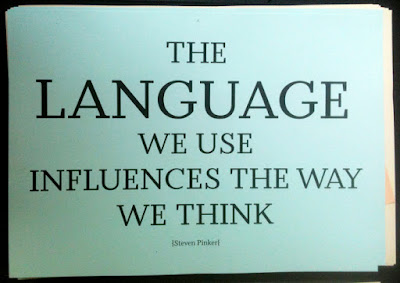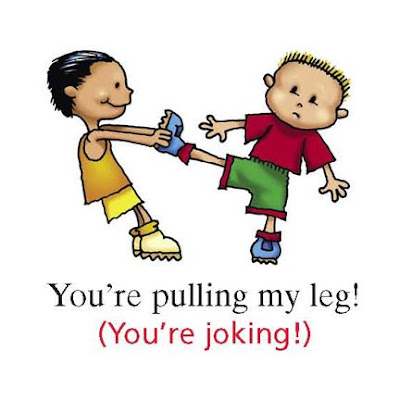VARIETIES OF ENGLISH
Most Brit and American teachers are all too aware of the
differences between the deceivingly similar languages.
They share a sarcastic disdain for each other’s
pronunciation of ‘tomato’ and have long argued about the difference between
‘biscuit’ and ‘cookie’ or ‘chip’ and ‘crisp’. There is always a right or wrong
answer- it just depends on who’s being asked.
Pettiness aside, these inconsistencies pose a few questions
when faced with a class full of ESL students, particularly when those students
are schooled in British grammar and combine this with phrases learnt from
American TV shows and movies.
So which ‘English’ should you teach?
The best advice is to stick to what you know. You can teach
British English, but allow students (especially beginners) to use American
conjugations and pronunciation if they find it easier to do so.
Try to resist the urge to make generalizations about whether
something is right or wrong.
Never underestimate your students’ ability to catch you out
– many take great pleasure in doing this. Keep it simple and make it clear that
you are teaching only one style of English.
As a starting point, here are six of the most common
differences you may encounter whilst teaching:
1. Regular or Irregular?
The most notable difference between American and British
grammar is their inability to agree on whether verbs follow regular or
irregular conjugations.
The past tense and past participles of the verbs learn,
burn, dream, smell, spill, leap, lit, spit and saw amongst others, are all
irregular in Britain (learnt, burnt) but regular in America (learned, burned)
and many others follow similar patterns.
Confusingly, despite having regular past participles,
irregular adjectives may still be used in American English. ‘Burnt toast’ for
example.
American English is generally easier to teach owing to its
greater concentration of regular verbs, however it could be argued that if you
teach the irregular patterns then students will understand both.
2. Realize or Realise?
Any Brit who has inadvertently subjected their writing to an
American spell-check will already be familiar with their annoyingly similar yet
different spellings.
After hours spent agonizing over whether to use a ‘z’ or an
‘s’ or whether travelling is correctly spelt with one ‘l’ or two, I lost all
memory of what I was taught in school.
The main differences are that American English omits extra
letters and favours phonetic spellings – ‘traveller’ becomes ‘traveler’,
‘colour’ becomes ‘color’, ‘centre’ becomes ‘center’ and ‘recognise’ becomes
‘recognize’.
Let the students use whichever spelling they are familiar
with but always check for consistency – whichever method they prefer, they have
to stick to it!
3. Use of the Present Perfect
The present perfect is one of the most difficult tenses for
foreign students to grasp, a problem unaided by its different uses overseas.
Whereas Europeans would say, “I’ve already eaten”, an
American may simply use the past tense and say, “I already ate”, a phrase that
is deemed grammatically incorrect in England.
When teaching, particularly with beginners, it’s best to
give clear examples that clearly follow the grammatical ‘rules’.
For this reason I teach students to use the present perfect
with prepositions such as ‘already’, ‘yet’, ‘never’ and ‘ever’ and would
disallow the use of the past tense.
4. Use of Modal Verbs
In the UK, peopletend to use more modals than the American
peers. On numerous occasions I’ve overheard American teachers dismissing
expressions using ‘shall’, ‘shan’t’ or ‘ought to’ as out-of-date, unaware that
they are still used in England.
Students benefit greatly from a few pointers on modern
language usage (I would definitely discourage the use of ‘how do you do?’, for
example) but make sure you are aware of international variations before you
make these statements.
If unsure, simply state: ‘In America, we say it like this…’.
5. Numbers and dates
These basics are the bane of early language learning, as
anyone trying to master their telephone number in a new country will agree.
Most significant is the order of dates – 25th January 2009
would be expressed 25/01/09 in the UK but 01/25/09 in America.
Numbers may be pronounced differently too – ‘twelve hundred’
is more common in America than in England, where ‘one thousand two hundred’ is
preferred. Similarly the Americans often drop ‘and’ when reading numbers – ‘two
thousand and three’ might become ‘two thousand three’.
Students often struggle to distinguish these differences in
conversation and benefit from exposure to as many variations as possible.
6. Vocabulary
English speakers have plenty of disagreements over
vocabulary, with each country, and often region, renaming common items.
A British duvet is an American comforter, a lift is an
elevator, and the boot of a car is a trunk. The list is endless.
With vocabulary, try to teach as much as possible without baffling the student. The more words they know the better.
With vocabulary, try to teach as much as possible without baffling the student. The more words they know the better.
When dealing with a special case, refine the selections – a
student moving to the UK will obviously benefit from English phrases and
colloquialisms whereas a salesperson who deals with US representatives would
need to familiarize themselves with American speech.
taken from: https://matadornetwork.com/abroad/british-and-american-english-how-to-teach-english-you-dont-speak/
prepared by: Marija Anđelić, English teacher






Коментари
Постави коментар